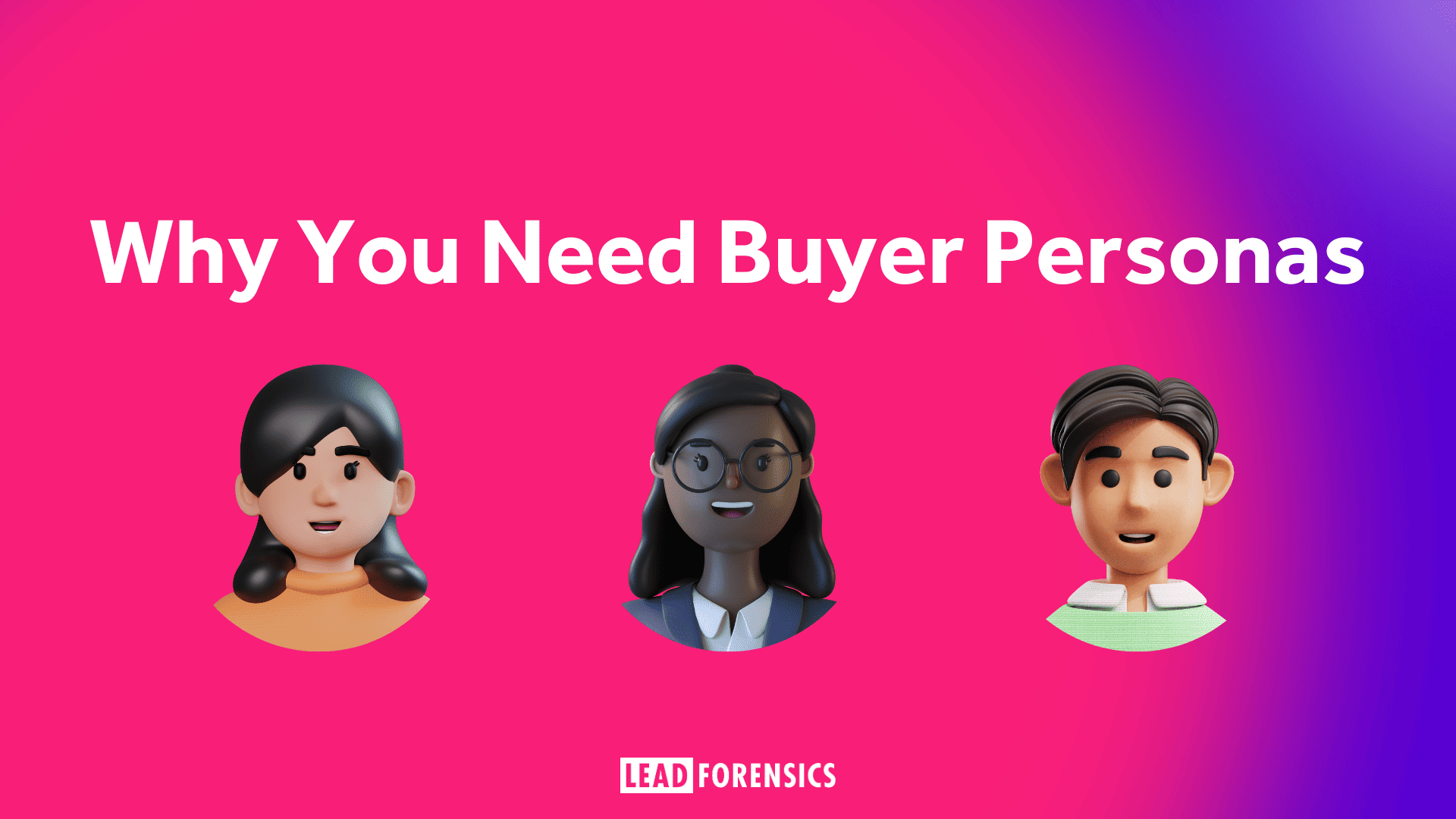In the face of such pressure, it can be easy to fall into the trap of simply focusing on the day job. But this can end up being a false economy.
Spending time getting your sales process clearly mapped out and fully optimized will help you close more sales. It’s as simple as that. And a key part of that process is preparing and using buyer personas.
Do it right and you’ll reap the benefit many times over, and here’s why:
6 valuable ways buyer personas can help you
- Understand your target audience better
- Have greater consistency in language, tone and style
- Create more tailored marketing campaigns for lead generation, nurturing and retention
- Achieve stronger company alignment
- Generate more, high quality leads
- Land more sales
Buyer personas are basically about researching and fully understanding who your target customer is, so you can effectively tailor your sales and marketing activities to maximize their impact.
They are the most effective tool you have at your disposal when it comes to reaching the right people, at the right time, with the right messaging.
It’s far more than simply targeting a job title. It’s about understanding what makes your target customer tick, what their problems are, what their motivations are, what they may respond best to and everything else that may have an influence on how they make their purchasing decisions.
What is a Buyer Persona?
Firstly, let’s start with what it’s not: ‘Chris, aged 35-50, IT Manager, married, on £50k’
If you’ve heard about buyer personas before, but never really read up on them, then this may be what you’re expecting – a brief description of your ‘typical’ customer, based around their job title.
And if that’s what you’re imagining – or indeed, what you have been using – then it’s no surprise you won’t have found them that useful.
This kind of profile is going to be little or no help to you when it comes to achieving more sales. What you should be aiming to pull together is a comprehensive profile of your main customer ‘types’. Each persona should be a general representation of one of these individual customer types.
Buyer personas are about going beneath the surface, to look at motivations, drivers and influencers. It’s looking at what shapes the person you are targeting – most importantly, what influences them and is driving their decision making.
The best way to present each persona is to package it up as an individual, such as ‘I am Graham an IT Director’, as that will help you and the team have a picture in your mind of who you’re targeting and speaking to.
Why Are Buyer Personas Important?
- They will guide and inform marketing and sales activities
- Aid team alignment and reduce the chance of working in silos
- Promote a consistent use of language, style and tone of voice
- Help teams cut down on working from assumptions
- Improve segmentation and targeting
You will of course have to start off making some assumptions in the beginning, but as you move forward, use what you find out to keep improving and refining your personas.
Content Creation
Content marketing is one of the best methods you can use for B2B lead generation. For it to be effective however, it needs to be highly targeted and providing answers to the questions that potential prospects have and are searching for.
To get it right, you need a deep understanding of your target audience – from the topics and issues they will be interested in, to where they get their information and how they will prefer it to be packaged.
The process of putting together buyer personas should help you here on every level. Plus, it should reveal issues you can leverage in your campaign messaging.
Team Alignment
Far from being simply a tool for the marketing team, if you invest time in doing your buyer personas well then they will be valuable across the entire business, from sales to customer services and senior management.
They can help align teams, which is something the best performing companies recognize as being important.
The strongest position you can be in is to have a shared vision, where teams understand each other, what they’re aiming to do individually and how they all fit together to achieve a common goal.
Agreeing what your ideal customer will look like, who you’re going to aim at, how you’re going to do it and why, is something buyer personas can help get clear in everyone’s mind. Then, by having teams share what they hear and learn along the way, they can be refined and your offering made even stronger.
It’s about giving prospects what they want and talking their language. The more targeted you can become, the more effective you will be.
Don’t Forget About the Bigger Picture
Depending on the size of the price tag associated with your product, your sales cycle may be lengthy and complex. In these cases, it is particularly unlikely that there will only be one person involved in the purchasing decision.
So, when thinking about your buyer personas, you also need to think about how the different personas sit together. What are the key relationships? The person signing off on a purchase may not be the one doing the research, pulling together a shortlist and finding options. Who do you need to get in front of and when?
Buyer Persona Templates
Now you know what buyer personas are there to do and why you need them for your sales and marketing activities, let’s look at how you go about putting them together. Here is a ready to use template to help you document your buyer personas.
When you start to write up your buyer personas, remember to do so in the first person. This will help bring them to life even more for the team. Also consider giving them a photo and a name, to further cement the impression they create.
Here is a run through of the most common categories a buyer persona might include:
Name and Short Biog
Give your buyer persona a name, for example ‘Graham – IT Director’
Outline their position and the different roles they may play – ‘I’m part of a national, very corporate organization. I have responsibility for a large team. I’ve risen up the ranks over many years to become part of the senior team. I’m a board member.’
Plus, key demographics – ‘I have a Masters, I’m in the age band 40-55 and I’m in the wage bracket £100-£200k’
Communication Preferences
Which communication channels does the persona use regularly? How do they prefer to receive communications? What style of language are they most likely to respond to?
A Typical Day
Think what a typical day may look like. What takes up their time? What different hats do they have to wear? What tasks are they balancing?
Goals and Objectives
What are their personal and professional goals and objectives? What are their individual responsibilities and what is expected of them?
Pain Points and Challenges
What problems do they face in their working life? What are the most likely constraints and hurdles they may face in achieving their goals? – for example, too much to do.
Orientation
Who do they report into? Who around them may have a say in purchasing decisions?
Obstacles
What will be the likely obstacles when they’re making a purchasing decision?
Information and Evidence
What questions do they need to have answered, to be able to make a purchasing decision? What ‘evidence’, facts and figures will they need to sign off on a purchase?
It will take time to get accurate and comprehensive buyer personas together, especially if you are pulling teams together to discuss and agree on what they should include, but your efforts will be worth it in the end.
Nothing is going to help you generate more leads and land more sales than knowing exactly who you’re aiming at, understanding their pain points and the pressures they are under, and ensuring every step in the sales process is tailored to their preferences.










